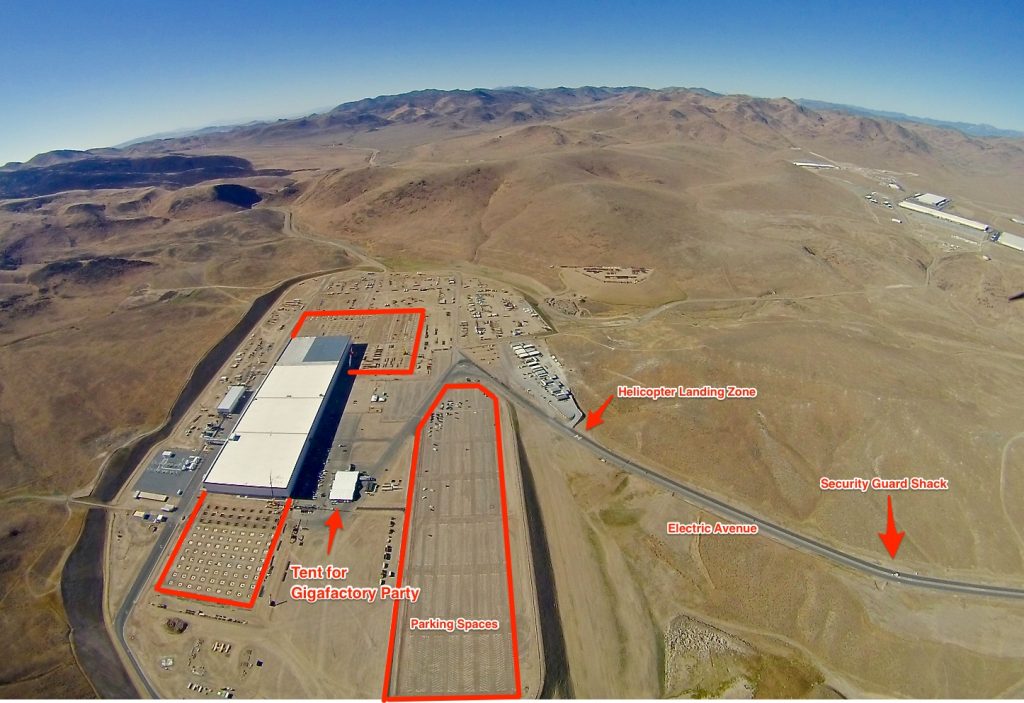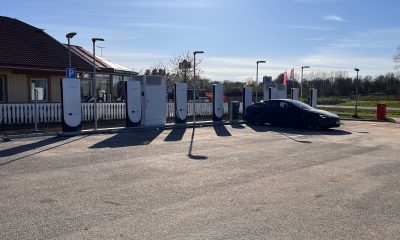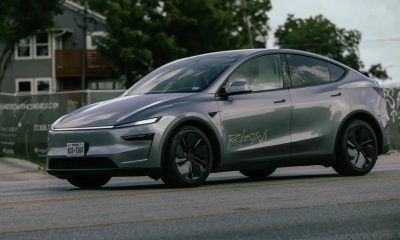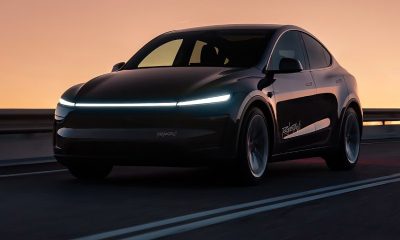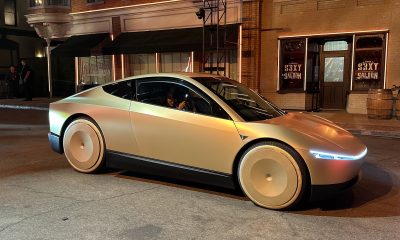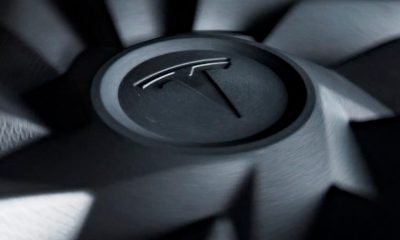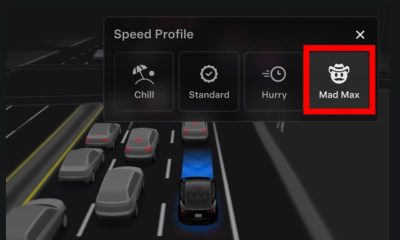News
New aerial photos of Tesla Gigafactory 1 reveal upcoming expansion
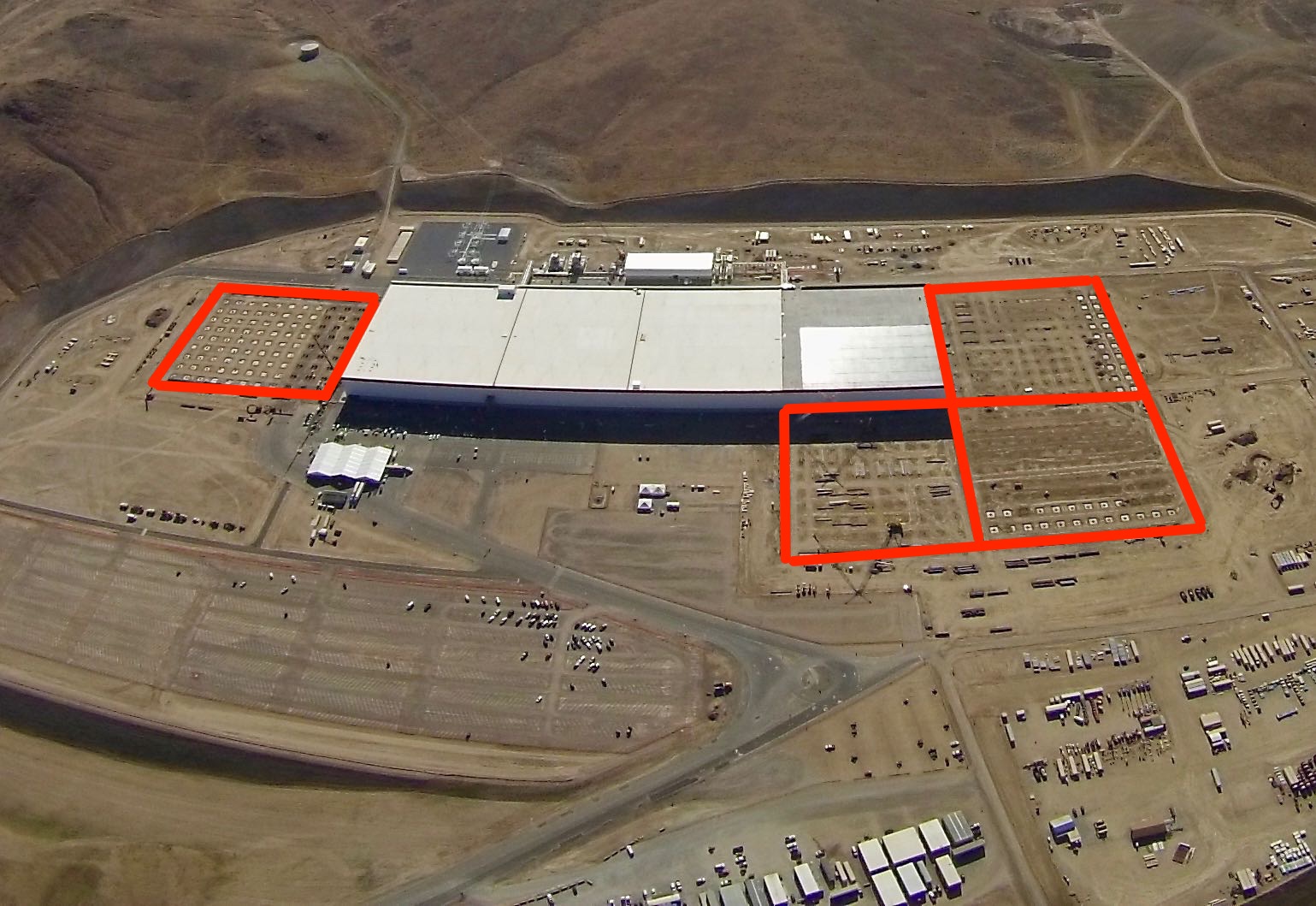
When local flight instructor Josh Mcdonald flew over Tesla Gigafactory 1 yesterday he sighted what appeared to be preparations for its upcoming grand opening party. An enormous party tent was spotted being perched outside of the battery plant. But beyond that, he also noted new footings and foundations adjoining the north and south end of the Gigafactory were being constructed. We’ve outlined these sections in red showing four new sections appearing to have the same if not larger combined footprint equal to the size of the existing Gigafactory.
The four sections seems to encompass approximately 1.9 million square feet of floor space – the size of the existing Gigafactory – representing less than one-sixth the size of the overall factory when completed. According to a report on the Wall Street Journal, the size of the construction crew has more than doubled recently and work is proceeding in double shifts, 7 days a week.
“We have to be ready with cell and pack production well ahead of vehicle production,” CTO JB Straubel, said during a walk through of the factory. “We’re accelerating our construction plans and accelerating our planned ramp up of cell production.”
Tesla wants the factory operational before the launch of the Model 3. Production for that car is now expected to begin in late 2017 with Panasonic being a major partner in the Gigafactory process. “We are running around like crazy hiring people,” says a Panasonic representative. The Japanese battery company is racing to catch up, after Elon Musk announced he was moving the timeline forward to sell 500,000 cars a year two years sooner than anticipated.
“If you look at where batteries are being made, it’s almost all in Asia,” JB Straubel says. “That was one of the big opportunities we have here, is to close the logistics loop from where cells are made and materials are made and move it closer to where our vehicles are made.”
Sam Jaffe, a principal with Cairn Energy Research Advisors, is skeptical that the reductions in battery costs that Tesla anticipates from building the Gigafactory will happen right away. “What they won’t be able to do from a battery manufacturing perspective is make the cells as cheaply as they hoped. A lot of the price reductions from the Gigafactory model come from the supply chain re-creation that they will be doing in North America. That won’t be ready by 2018.”
One thing often overlooked about Tesla is that it is a US-based company making cars in the US with US workers. It doesn’t get enough credit for its job creation prowess here at home.
Tesla will be holding a Grand Opening party this Friday July 29 at the Gigafactory. Aerial photos reveal a newly painted parking lot large enough to accommodate 2,000 vehicles and possibly a test track around the perimeter of the facility.
News
Tesla Sweden faces new pressure in Sweden as Assa Abloy joins union action
The sympathy strike will block Assa Abloy’s 330 employees across six Swedish facilities from servicing or maintaining locks and gates used at Tesla Sweden’s sites.
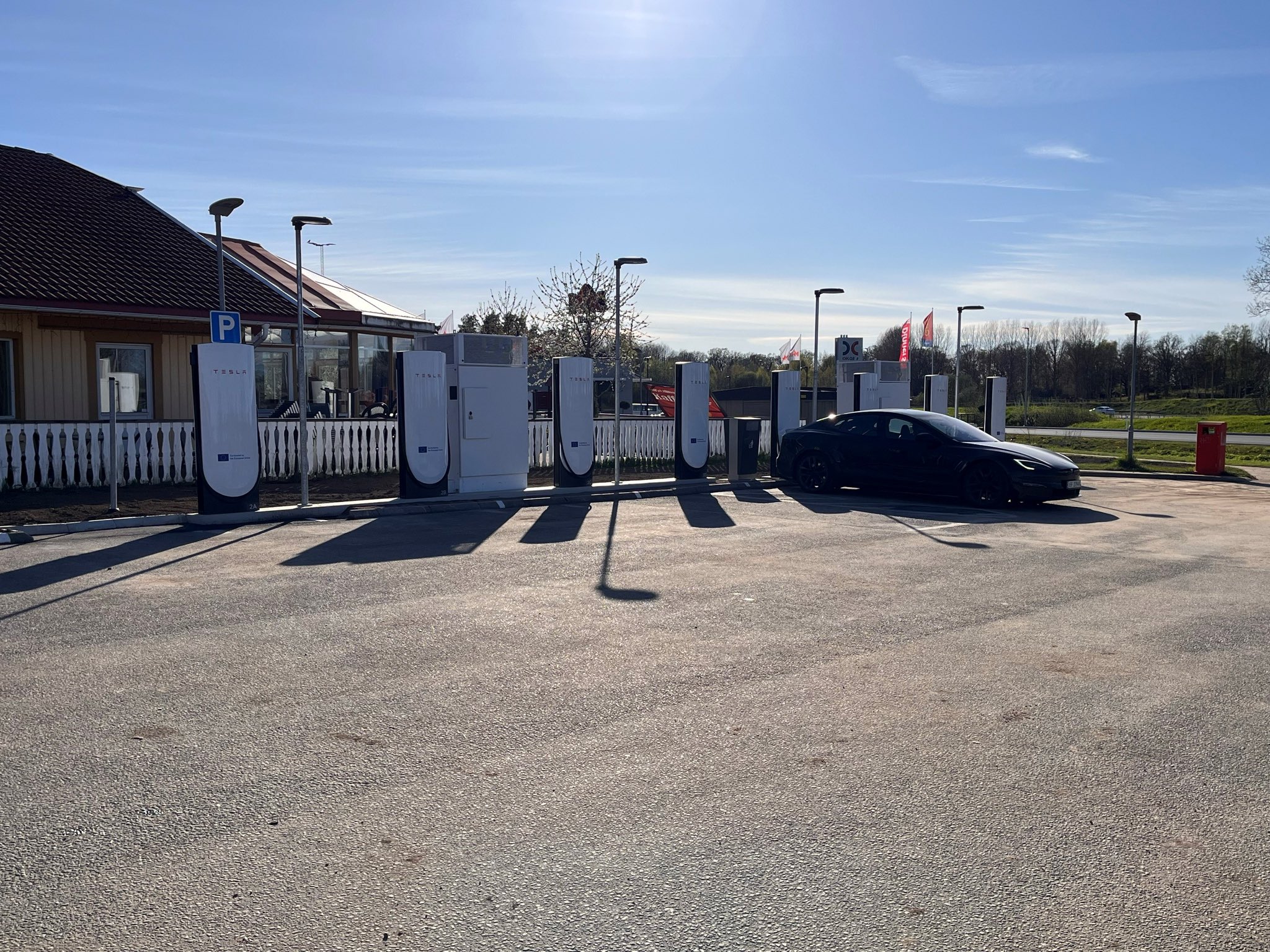
The labor standoff between Tesla and Sweden’s IF Metall union has widened again, this time pulling in Assa Abloy Industrial, a manufacturer of industrial doors and locks.
IF Metall announced a new sympathy strike halting all Assa Abloy services for Tesla, set to take effect November 4, according to Dagens Arbete (DA). The move is aimed at further pressuring Tesla into signing a collective agreement after nearly two years of ongoing labor conflict.
New strike targets Tesla’s industrial operations
The sympathy strike will block Assa Abloy’s 330 employees across six Swedish facilities from servicing or maintaining locks and gates used at Tesla Sweden’s sites. IF Metall hopes the measure will disrupt Tesla’s daily operations and highlight the growing solidarity among Swedish companies.
Assa Abloy becomes the latest in a line of firms drawn into the dispute, with the Swedish Mediation Institute now logging fourteen conflict notices since September. The escalation shows that unions and partner industries are aligning to support of IF Metall’s campaign to secure a collective bargaining deal, something Tesla has consistently resisted.
IF Metall says Tesla must understand Sweden’s labor model
IF Metall chair Marie Nilsson recently reiterated her call for Tesla Sweden to reconsider its stance on organized labor, noting that Sweden’s union system differs sharply from the more adversarial model in the United States.
“I can certainly understand that Elon Musk and Tesla are skeptical of the trade union movement,” Nilsson said. “They have experience with American unions that operate in a completely different environment and that have to be militant in a different way.”
Nilsson emphasized that Swedish unions function cooperatively and that signing a collective agreement locally does not commit Tesla to similar deals elsewhere. “Let’s give us a chance,” she added. “It is the practical system we have here to regulate the conditions.”
News
Elon Musk: Tesla autonomous driving might spread faster than any tech
The CEO noted that “hardware foundations have been laid for such a long time.”

Elon Musk has shared one of his most optimistic forecasts for Tesla’s self-driving rollout yet. As per the CEO, Tesla’s self-driving system could see the fastest technological adoption in history, thanks to the fleet’s capability to gain autonomous capabilities through a software update.
The CEO shared his forecast in a post on social media platform X.
Tesla’s aims to scale autonomy
Musk’s comment came as a response to industry watcher Sawyer Merritt, who posted a comparison between the geofence of Tesla’s Robotaxi network and Waymo’s service area. As can be seen in the graphic, Tesla’s Austin geofence has gotten noticeably larger compared to Waymo’s service area.
In his response, Musk stated that “Tesla autonomous driving might spread faster than any technology ever.” He also stated that “hardware foundations have been laid for such a long time,” as a software update could unlock full autonomy “for millions of pre-existing cars in a short period of time.”
Musk’s comment bodes well for Tesla’s Robotaxi ambitions, which seem to be finally in reach with the deployment of Unsupervised FSD in vehicle factories, as well as Austin and the Bay Area. For now, however, Tesla’s Austin Robotaxis and Bay Area ride-hailing vehicles are still operated with a safety monitor in the driver’s seat.
Tesla’s latest Austin expansion
Tesla recently expanded its Austin Robotaxi service area this week to 243 square miles, its largest yet and nearly triple the coverage from two months ago. The move outpaces Waymo’s local service footprint, which remains at around 90 square miles.
The expansion marks Tesla’s second major Austin update since August and emphasizes its push to dominate the autonomous ride-hailing landscape. With both Tesla and Waymo racing to prove scale and reliability, Musk’s confidence suggests the real contest may be about who can move fastest once the tech flips on across Tesla’s fleet. Once that happens, Tesla would effectively be able to win the self-driving race.
News
Tesla sends clear message to Waymo with latest Austin Robotaxi move
It is the first expansion Tesla has made in Austin since the one on August 26. The company still operates in the Bay Area of California as well, referring to that program specifically as a “ride-hailing service.”

Tesla has sent a clear message to Waymo with its latest move to its Robotaxi program in Austin, Texas.
Tesla and Waymo are the two true leaders in autonomous ride-hailing to an extent. Tesla has what many believe is a lot of potential due to its prowess with the Supervised Full Self-Driving suite. It is also operating a driverless Robotaxi service in Austin with a “Safety Monitor” that sits in the passenger’s seat.
Tesla explains why Robotaxis now have safety monitors in the driver’s seat
The two companies have been competing heavily in the market since they both launched driverless ride-hailing services in Austin this year: Waymo’s in March and Tesla’s in June.
One of the main drivers in the competition between the two is service area size, or the geofence in which the cars will operate without a driver. In August, the two were tied with a service area of about 90 square miles (233.099 sq. km).
Tesla then expanded to about 170 square miles (440.298 sq. km) on August 26, dwarfing Waymo’s service area and expanding to freeways. Tesla’s freeway operation of the Robotaxi suite requires the Safety Monitor to be in the driver’s seat for safety reasons.
On Tuesday evening, Tesla made another move that sent a clear message to Waymo, as it expanded once again, this time to 243 square miles (629.367 sq. km).
This is according to Robotracker:
Here’s a comparison of Tesla’s geofence in Austin vs. Waymo’s
Tesla’s now spans 243 square miles, almost three times the size of Waymo’s at 89 square miles https://t.co/OCAHQDQhzb pic.twitter.com/wq5bHQXCp4
— TESLARATI (@Teslarati) October 29, 2025
It is the first expansion Tesla has made in Austin since the one on August 26. The company still operates in the Bay Area of California as well, referring to that program specifically as a “ride-hailing service.”
Yesterday, it expanded that service to the San Jose Mineta International Airport, something it has been working on for several months.
Waymo has its own set of distinct advantages over Tesla as well, as it operates in more cities and states than the EV maker. Waymo currently has its autonomous vehicle services in Phoenix, Arizona, San Francisco, Los Angeles, Austin, and Atlanta, Georgia.
Tesla plans to have half of the U.S. population with access to the Robotaxi platform by the end of the year.
-

 Elon Musk2 weeks ago
Elon Musk2 weeks agoSpaceX posts Starship booster feat that’s so nutty, it doesn’t even look real
-

 Elon Musk2 weeks ago
Elon Musk2 weeks agoTesla Full Self-Driving gets an offer to be insured for ‘almost free’
-

 News2 weeks ago
News2 weeks agoElon Musk confirms Tesla FSD V14.2 will see widespread rollout
-

 News2 weeks ago
News2 weeks agoTesla is adding an interesting feature to its centerscreen in a coming update
-

 News2 weeks ago
News2 weeks agoTesla launches new interior option for Model Y
-

 News2 weeks ago
News2 weeks agoTesla widens rollout of new Full Self-Driving suite to more owners
-

 Elon Musk2 weeks ago
Elon Musk2 weeks agoTesla CEO Elon Musk’s $1 trillion pay package hits first adversity from proxy firm
-

 News1 week ago
News1 week agoTesla might be doing away with a long-included feature with its vehicles

